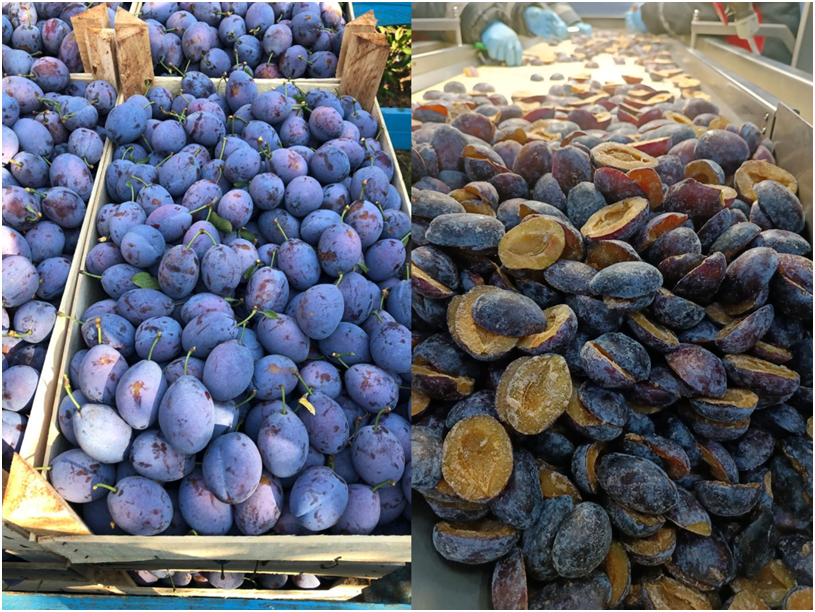“Stanley” plum variety is the most purchased variety of frozen plums in Europe, so the start of its season was expected by all freezing enterprises. By the way, the variety is sold well both on the fresh market and for drying (production of prunes).
In Moldova, the 2022 Stanley plum harvesting season started in mid-August, and expectations for the season were encouraging: the quality of raw materials was good, the caliber was medium and even large, and the harvest was average – lower than in 2021, but enough for the planned sales to the fresh market and for processing.
Plums were expected to be one of the best fruits for the fresh market and freezing of the 2022 season. However, the expectations did not come true.
Reliability of trading partners
First of all, the most unreliable trading partner of the region had its say – when the season started, Russia unexpectedly introduced restrictions on the import of fresh fruits and vegetables from Moldova. And this means that the market immediately formed an excess of about 20 000-25 000 tonnes of plums, which Moldova usually exported fresh to the Russian market.
This quickly spread in the media, and farmers had to react promptly because the harvesting started. One option was to sell plums to other EU countries, which is very difficult as the EU market is quite stable, and farmers thought that it was quite difficult to sell more there.
The second option to store plums waiting for the issue with supplies to the Russian Federation to resolve later, or sell plums to the EU after storage, was very risky.
A third option is to sell the plums to processors at a lower price than selling them on the fresh market, without incurring storage costs.
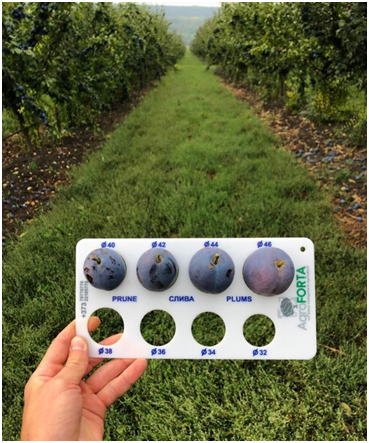
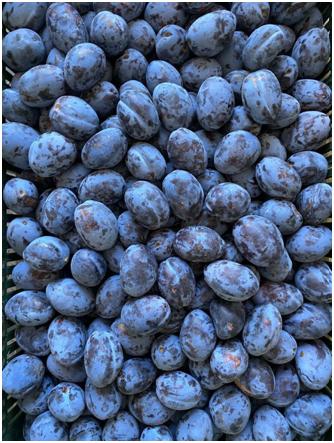
One should realize that plums compete with apples for storage space, and the harvest of apple varieties to be stored also starts at the end of August. Therefore, deciding was not easy for farmers, especially given that apple exports to the Russian Federation were also banned and Moldova’s dependence on them is much higher than on plum exports.
Not surprisingly, the plum market began to panic. Traders that used to work for the Russian market changed their procurement plans and conditions during the harvesting or refused to purchase. The fresh plum market has partially switched to standby mode.
Initially, the estimated price for raw materials for freezing was at the level of that in the 2021 season – 0.20 EUR/kg. While high for the processor, this price was low for the farmer.
We should refer here to the painful moment of making a decision by the freezing enterprise and determining the marginality of the frozen product, which we described in the article Investing in freezing berries, fruits and vegetables: unexpected challenges for beginners (Part I). Here is a quote from it:
“The pricing for raw materials and finished products is very important! In your country, the price level for raw materials may be higher than in competing countries, and it may turn out that freezing this product does not make economic sense. Many still buy raw materials, freeze them, hoping for a price increase, store them for a long time, and sell them into the red”.
The Serbian factor – how do they do it?
While Moldovan freezers were considering at what price they could buy raw materials, at the time of the mass harvesting, European customers reported the first offers of frozen plum halves from Serbia with a declared price of finished products in a box on the basis of FCA Serbia at 0.60 EUR/kg. Recall that Serbia is one of the main producers of frozen plums, which often dictates the pricing on the European market.
To “fit” into this price, freezing enterprises in Moldova would have to buy raw materials at 0.10-0.12 EUR/1 kg. This price looked unrealistically low even given the difficult situation in the local market.
By the way, we never managed to find out how Serbia managed to sell frozen plums so cheaply. Perhaps it was the sale of leftovers from the previous harvest season in anticipation of the new one, or some technological tricks allowed them to increase processing efficiency and invest in such an unrealistically low price, however, as we know, the demand for frozen plums was not high even at such low prices.
Moldovan farmers were also in despair – the issues with supplies for the frozen market were added to the problematic supply to the fresh market.
Processors had to choose between taking risks and buying plums at a higher price to freeze at least something, or not to freeze anything. As a result, there were no deals – the price looked too risky in the challenging freezing market, so they refused to freeze plums.
As for the farmers, they began to massively store fresh plums, hoping to stretch the sales period by the shelf life and wait for higher prices. Alas, this turned out to be an unfortunate decision for many, as the demand for fresh plums did not increase, and the price continued to fall.
The high yield factor in Germany and Poland and again the Serbian factor
Time passed, and, as you know, the quality of fruits during storage does not improve. The pressure on the market continued to grow, but there was still no demand.
Germany and Poland, which usually buy about 5 000 tonnes of plums from Moldova per season, showed no interest in increasing the volume of imports, even at a low price.
The fact is that the 2022 plum harvest turned out to be high in both Poland and Germany. At the same time, Polish growers complained that their plums are not sold, because there are a lot of cheap Serbian plums on the market, which local supermarkets buy more than Polish ones.
So, Serbia took over the market of frozen plums in Europe and the market of fresh plums in such countries as Poland and Germany from Moldova. By the way, according to Polish growers, the expansion of Serbian plums to the EU markets was caused by the abolition of the tariff quota for Serbian plums in the EU.
It should be noted that plums, once put into storage, are no longer suitable for freezing due to the deterioration of their commercial characteristics. Therefore, growers had only one way out – to sell their plums for drying to local producers of prunes at 0.25 EUR for very good quality, and at a lower price for lower quality, respectively. For comparison, the average price of fresh plums during the fresh sales season can be 0.35-0.45 EUR without storage costs.
Taking into account the costs of logistics, storage, and the resulting forced sale for drying, some farmers lost almost 50% of the expected income from the sale of plums in 2022.
As for the frozen plum market, throughout the 2022 season and up to February 2023 inclusive, the frozen plum market has been relatively stable with extremely low prices. Despite the low price, there were several times fewer deals than in the same periods of previous years.
Even now, the real price at which deals for frozen plums can be made fluctuates between 0.60-0.65 EUR FCA Serbia for 1 class, which is about 0.70-0.75 EUR DAP Germany (for example). For class 2, the price even decreased and now it is only 0.50-0.55 EUR FCA Serbia.
Frozen plum, hand-cut halves, class 1
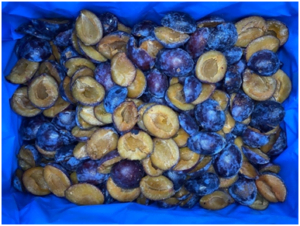
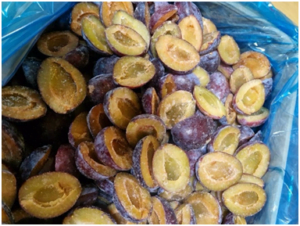
Frozen plum, class 2
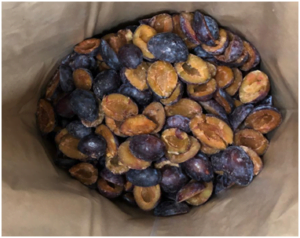
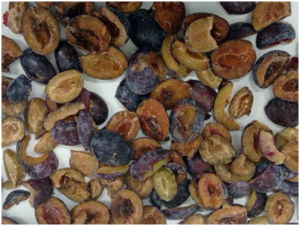
These prices are not profitable for crops that are good to freeze. So, the plum season was rather bad without a significant margin, which was the opposite of expectations.
Besides, producers suffered huge losses in the frozen raspberry market, and even reliable traditional buyers of many other frozen fruits were passive. With record-breaking electricity prices for freezing and storing frozen fruits and berries, the 2022/23 season has been extremely challenging for the industry.
The plum season in Moldova in 2022 is the clearest example of the delusion that the market works according to your rules and expectations. It can be absolutely unpredictable, and all we can do is study it as much as possible and try to respond to its changes in time. You are in competition with the whole world, and there are a lot of factors that change the rules in the market in an instant.
Possible implications for the 2023/24 season
Will the plum season be more favorable this year for farmers and freezers?
First of all, you need to look at the facts.
Fact #1 – the freezing enterprises enter the new season with stocks of unsold products and much lower budgets. Therefore, their ability to finance the purchase of raw materials in the new season will be lower than a year earlier. And this is bad news for farmers and, of course, for freezing companies.
Fact #2 – The economy of the region’s largest plum importer, Russia, keeps degrading rapidly, and the population is declining. This is also bad news for farmers – there is no reason to expect an increase in demand from this side. By the way, it is important to understand this even if Moldova does not have access to the Russian market, because product flows do not disappear, but are redistributed.
It is worth noting that almost immediately after the ban on the import of fresh fruits and vegetables, the Russian Federation confirmed the list of companies that were allowed to export, and it has been recently expanded. That is, in the 2023 season, fresh fruits and vegetables have a legitimate basis for export from Moldova to the Russian Federation.
However, it is not as simple as it might seem. According to market participants, the possibility of export is still associated with additional, often unofficial costs. Another problem is the expensive logistics from Moldova to Russia. The third problem is Uzbekistan, which has sharply increased the supply of very cheap plums to Russia. Although the seasons for the sale of plums in Uzbekistan and Moldova overlap only partially, the low price level set by Uzbekistan in the Russian market in the summer period also affects prices in the autumn period.
Fact #3 – in recent years, the area of plum orchards in many countries of Eastern Europe continued to increase, because it was almost always possible to earn money on plums, unlike, for example, apples. Therefore, those Ukrainian growers that uprooted apple orchards this year, as a rule, left plum orchards. And this is also bad news for farmers, because if there are no natural disasters, the plum harvest may be high again.
Of course, plums are a stone fruit that can still suffer from spring frosts and other weather surprises, so options are possible here.
However, for the growth of demand for frozen fruits, economic growth in the Eurozone countries must be resumed. So far, the eurozone GDP growth forecast for 2023 is on the verge of stagnation at 0.8%. At the same time, inflation is projected at an extremely high level – about 6.4%, which is bad news for both farmers and freezing companies.
The use of the site materials is free if there is a direct and open for search engines hyperlink to a specific publication of the East-Fruit.com website.




